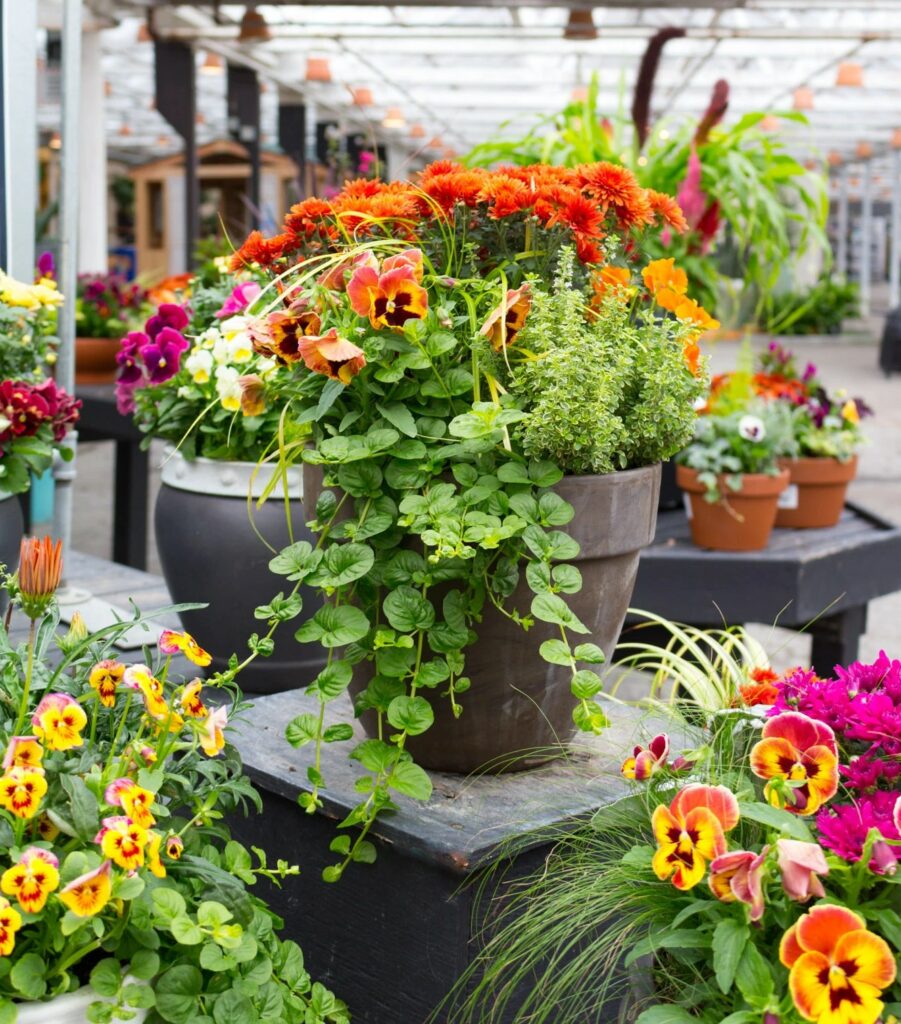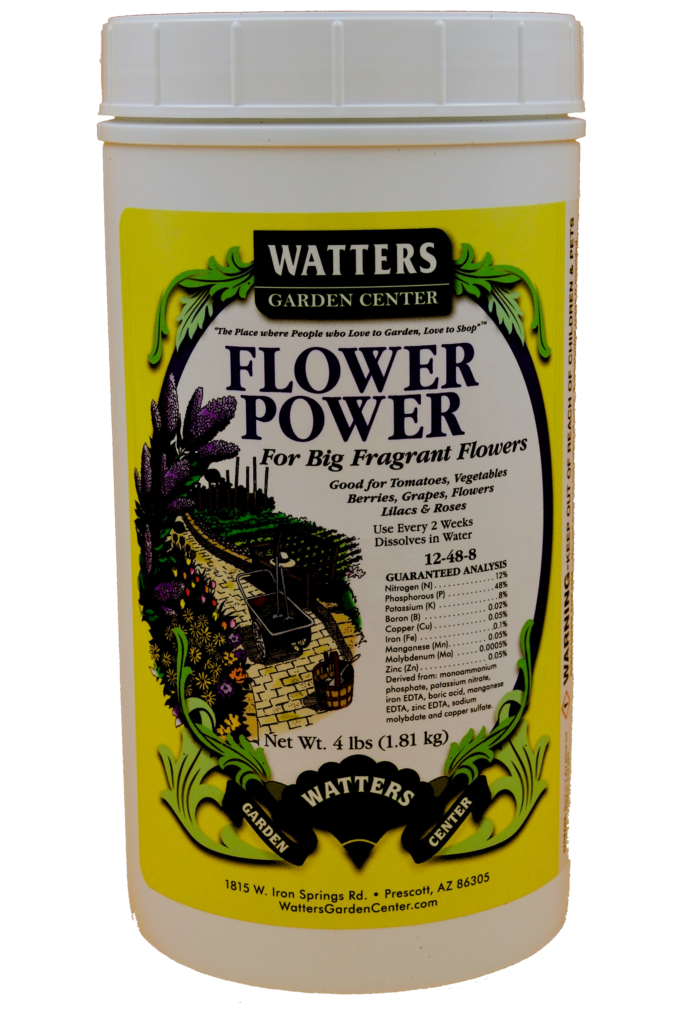by Ken Lain, the mountain gardener


Readers Digest Condensed Version of this Article
- Look for young, bushy plants just starting to set flowers.
- Get them in containers or the ground ASAP.
- Water immediately after planting.
- Feed every 2-Weeks with Flower Power Liquid Food.
- Premium Mulching keeps shallow roots cool and moist.
- New modern flowers pinch and clean themselves.
Most of us plant annual flowers because they bloom for months, giving undemanding color all season. There’s nothing like a container of annuals to brighten a porch or deck. Even though plenty of annuals are grown for their foliage, like coleus and caladiums, flowering annuals remain the most popular.
Flowers we call annuals are really hardy perennials only in tropical climates. One gardener’s annual is another gardener’s perennial or houseplant. Here we focus on flowering plants sold at the garden center meant to be enjoyed for one season and expected to be composted at the end.
Plant breeders do a fantastic job of creating flowers that bloom non-stop, many with no help from the gardener. These stunning bloomers tend to be on the shorter side for easy care, shipping, and display in the garden. We still grow sizable old-fashioned plants like Coleus, Zinnia, Sunflowers, Dahlia, and Petunias.
Whether old classics or new designer styles, these insider tips keep your annual flowers looking fresh and blooming all season long.
Choosing and Planting
- Look for young, bushy plants just starting to set flowers. These acclimate better in your garden than pot-bound plants going to seed.
- Choose plants for your growing conditions. Struggles are had when finagling fun sun plants into gardens with less than six hours of sun or bake part shade flowers with more. These flowers aren’t established enough to take that kind of stress.
- Get them in containers or the ground ASAP. Don’t let them outgrow their nursery pot. They need time to adjust to being in the ground while young and actively growing.
- Water immediately after planting – even if rain is predicted.
- Water deeply and feed every 2-Weeks with Flower Power Liquid Food.
- Annuals have shallow roots. Irrigate when the soil feels dry 1-inch below the surface. A good moisture meter comes in handy at this point. Even low-water flowers bloom better with regular water. In the heat of summer, hanging baskets and small container gardens may need water more than once per day.
- Water Caution – few plants like sitting in wet, soggy soil or the roots begin to rot. Plant them in well-draining Watters Potting Soil. This mountain-specific soil holds water long enough for roots to soak it up while allowing excess water to drain.
- Aqua Boost Crystals infused into your plants’ roots regulate their moisture needs. This easy-to-use soil additive reduces your water requirements in half. It is beneficial for hanging baskets and small container gardens.
- Heat leaves your annuals feeling hot in the afternoon. Gardens are best irrigated in the cool morning sun before 8 am. They will be ready to take on the heat of the day. There will be days when leaves become crisp and dry, that’s OK. Don’t be afraid to cut damaged foliage off and prune the plants back to healthy leaves. Flowers grow back quickly.
- Premium Mulching keeps shallow roots cool and moist. The major drawback to mulching is that it inhibits re-seeding, so I try not to mulch until the volunteers from last season are up and growing.
- Deadhead often. Remove faded flowers to keep the seed from forming. This is most important with older varieties of plants that hold onto their old flowers, like geraniums, marigolds, pansies, petunias, salvia, snapdragons, sweet peas, and zinnias.
- New modern flowers can pinch and clean themselves. Their faded flowers seem to disappear as new buds form and open. Ask us whether the variety you’ve chosen needs pinching to become fat and bushy and set many buds.
- Many of the most popular varieties like Flowering Tobacco, Nicotiana alata, Sweet Alyssum, Lobularia maritima, Impatiens, Trailing Petunias, and Begonias require no deadheading to keep blooming.
- If plants begin to look ragged in midsummer, don’t be afraid to dramatically prune them. Petunias become long and leggy and look better when cut back 3-4″ inches to encourage new growth and new flowers. Coleus grows straight up and flops over if not pinched regularly until they become bushy and full.

Insider Tip
Here’s one for travelers that plan to get away for a week or two. Prune your annuals before leaving, and feed them with Flower Power Liquid Food. They will be packed with new blooms upon your return.
Until next week, I’ll be helping gardeners get the most out of their flowers here at Watters Garden Center. Ken Lain can be found at Watters Garden Center throughout the week, 1815 Iron Springs Rd in Prescott, or contacted through his website at WattersGardenCenter.com or Top10Flowers.com

